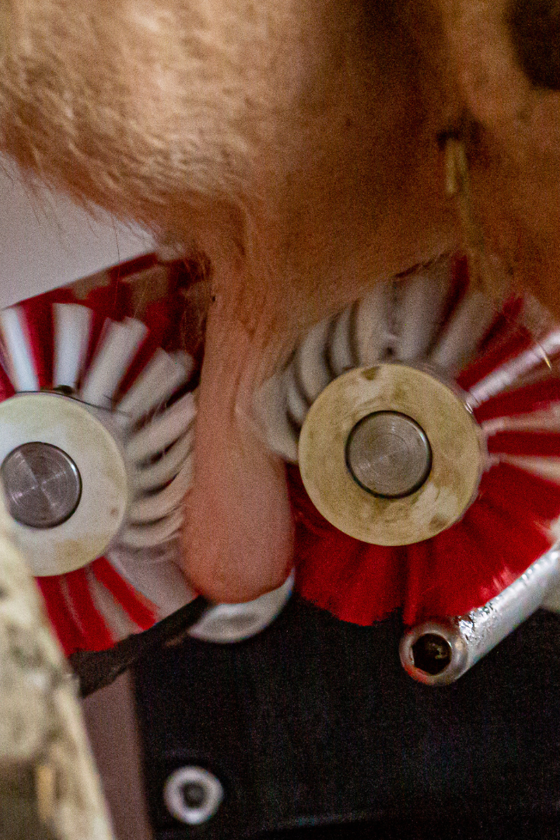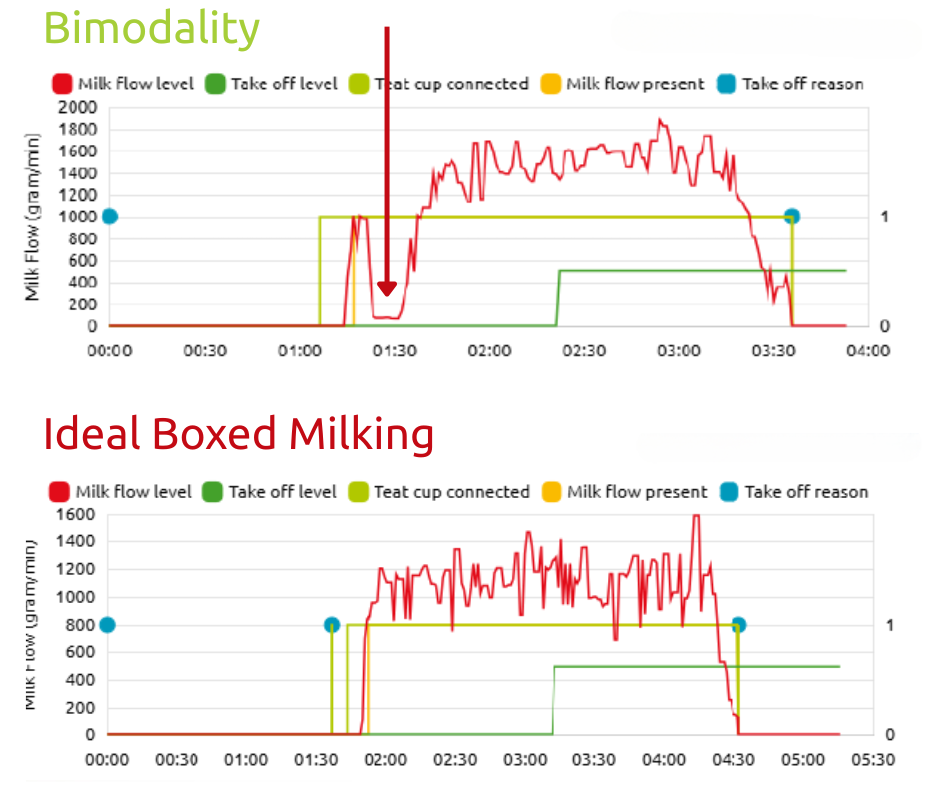Cow Health, Udder Care
Bimodality on Farm

What It Is and Why It Matters
It is something that can go unnoticed unless you are looking for it, but bimodality can happen in all milk systems. Bimodality is when there is a dip in milk flow near the start of the milking process. While it might sound like a fancy term, it’s something that can quietly affect the comfort, health and wellbeing of your cows. It can also be a cause of mastitis within the herd due to teat damage. On a farm level, it can affect the efficiency of your system. Whether you’re still in a parlour setup or working with Lely Astronauts, understanding bimodality can make a real difference.
What causes bimodality?
When a cow walks in to be milked, the first bit of milk you see released is called cisternal milk. This is stored in the larger ducts and teat cisterns of the udder.
The next stage is alveolar milk. This is held deeper within the udder and takes a bit more time to release. The cow needs to be properly stimulated to trigger the release of oxytocin, the hormone that gets that milk flowing properly.
If there’s a gap between the cisternal milk and the let-down of alveolar milk, that’s when bimodality occurs.

Why does it matter?
If the milk flow stalls early on, the teat ends up being under more stress. This is because the vacuum keeps going, the milk speed is low, and the cups stay on longer than they should. That can lead to discomfort, teat damage, and slower overall milking times.
It’s something that can be easily missed, but when caught early, it’s just as easy to manage.

What can you do?
This is where the Lely Astronaut system shows its worth. The fact is that bimodality doesn’t affect every single cow and it’s thanks to the data collected from the Astronaut allows the farmer to care for their herd on a cow by cow basis.
For Astronaut A5 users the Horizon app and Milk Access Tables allow farmer to utilise this further with the pre-treatment optimiser to monitor each cow’s milking pattern. You can see which cows are showing signs of bimodality and make small adjustments to improve their comfort and your output.
How does the Astronaut help?
One smart way the Lely Astronaut tackles bimodality is through a longer brushing phase before the cups go on with the pre treatment optimiser. This gentle stimulation helps kickstart that all-important oxytocin release, encouraging the alveolar milk to flow without delay.
What does that mean for your herd?
- Shorter, smoother milkings
- Happier, healthier cows
- Less stress on the udder
- Higher yields and faster
- Reduced bimodality
- More cows milked per robot
- Fewer failed or repeated attachments
Want to learn more? Contact us today!
If you’re already running a Lely A5 Astronaut and want advice on managing bimodality, get in touch with our Farm Management Support team:
📞 01228 792 735 (Option 4)
Curious about how robotic milking could lighten the load on your farm?
Speak to our Sales Team on:
📞 01228 792 735 (Option 3)
Email: info@lclongtown.co.uk